
During the building of Florence’s Cathedral (1300-1400), most of the houses in the area of the Piazza del Duomo were demolished with the exception of those at the north-eastern corner of the newly created square.
Some of the latter were located where Palazzo Niccolini al Duomo was subsequently erected. These buildings hosted the workshops of some of the most celebrated Florentine artists. Among them, was the famous sculptor Donatello, who is commemorated by a bust and an inscription on the façade of the Palazzo looking on the Cathedral.
The Palazzo was originally built by the Naldinis, an important family of Florentine merchants, bankers and valorous soldiers.
In 1532, Giovanni Naldini, started purchasing the houses in this area and began transforming these into what became the Palazzo. Over the following centuries, the mansion acquired its present aspect. In the 17th century, the architect Pierfrancesco Silvani was commissioned to build the monumental staircase, the great windows and the gateway, presently accessible from Via dei Servi, nr. 2. Between 1725 and 1732, Ottaviano Naldini (1684-1755) employed the architect Pier Paolo Giovannozzi, who gave the Palazzo the layout it retains today.
In the years 1763-1770, Domenico Andrea Naldini embellished the Palazzo’s interiors by having many rooms in the first and second floor decorated with frescoes that are still perfectly preserved. The painters involved were among the best-known artists of the time: Gaspero Nannucci, Niccolò Pintucci, Tommaso Gherardini and Gennaro Landi. The frescoes’ subjects are typical of the 18th century taste: allegories, landscapes, architectures, ruins, flowers and animals.
In 1879 the last of the Naldini, Cristina, married Marchese Eugenio Niccolini di Camugliano (1853-1939) and, as part of her dowry, brought the Palazzo into this old Florentine patrician family that has lived in it since then.